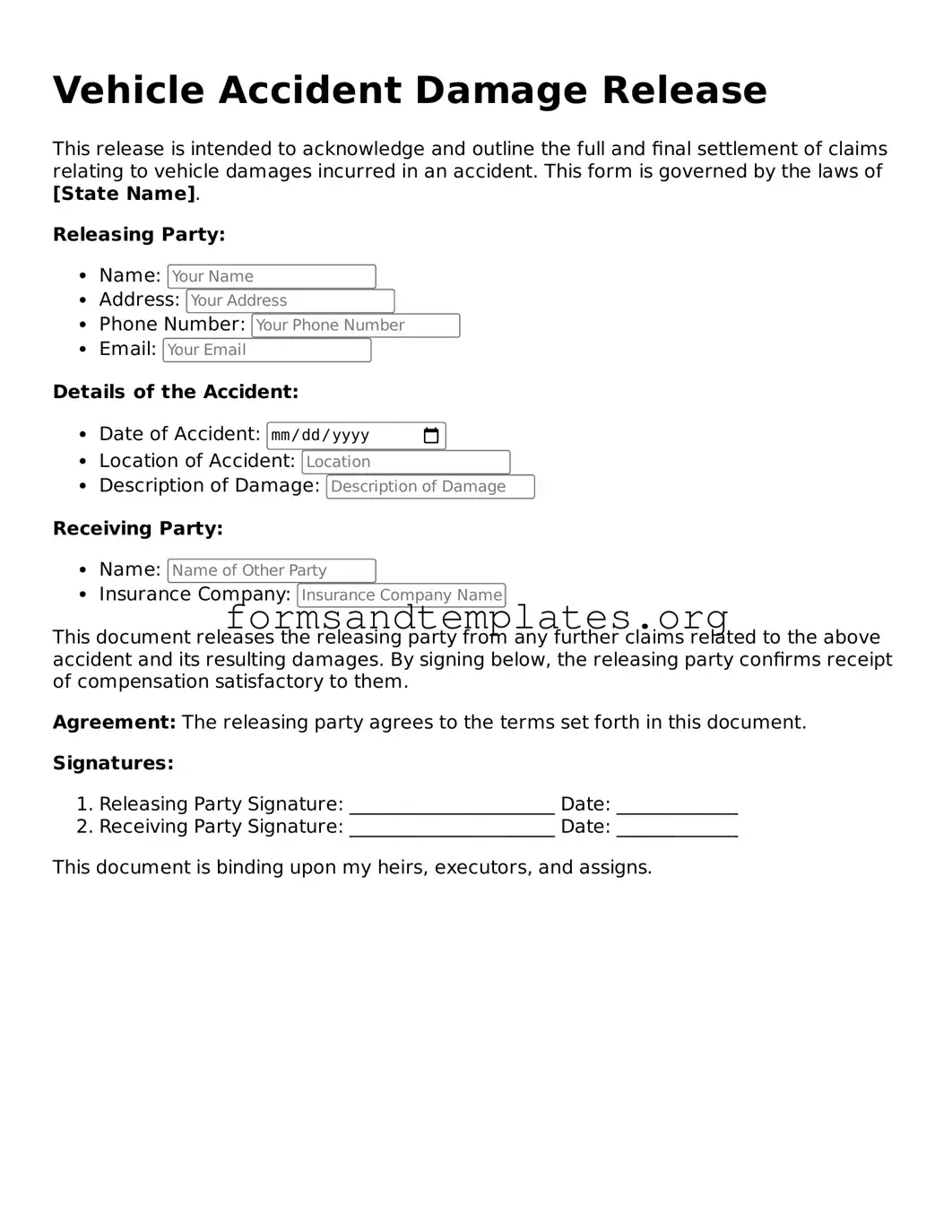Attorney-Verified Vehicle Accident Damage Release Template
The Vehicle Accident Damage Release form is a legal document used to settle claims related to damages incurred in a vehicle accident. By signing this form, individuals agree to release the other party from further liability concerning the accident. Completing this form is crucial for ensuring that all parties have a clear understanding of their rights and responsibilities.
Ready to fill out the form? Click the button below to get started.
Access Editor Here
